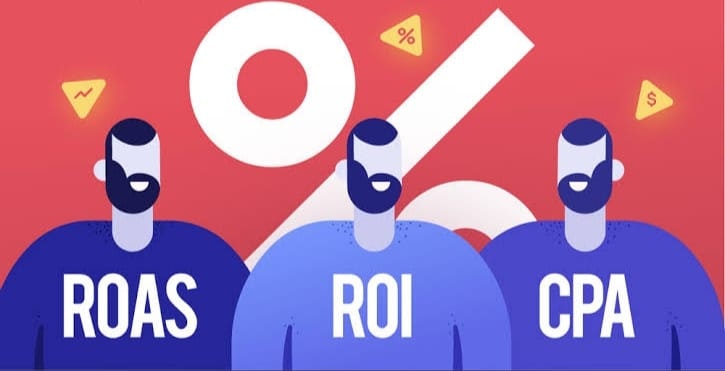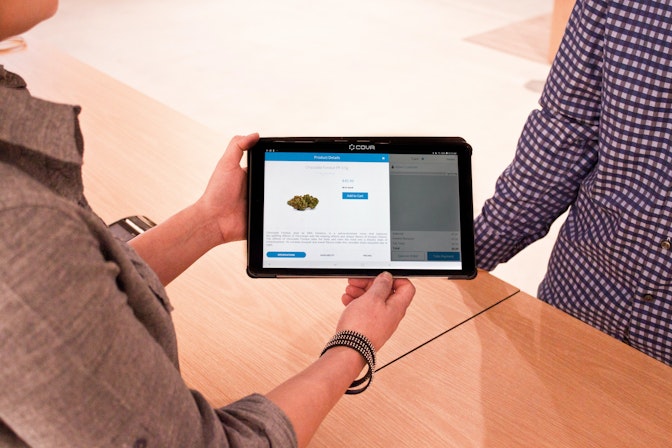Advertising is necessary for many businesses to build momentum and keep growing. But like everything in business, it requires strategy. One of the most critical considerations for your ad campaigns is making sure you’re not consistently putting resources in without getting enough revenue in return.
That’s why it’s important to set, track, and monitor business metrics to make sure you’re meeting your goals. Return on ad spend (ROAS) is one of those metrics—so be sure to add it to your weekly, monthly, and quarterly analytics. Let’s take a look at what it is, how to calculate ROAS, and some tips for increasing it in the long run.



What is return on ad spend?
Return on ad spend is a targeted and efficient way to look at how much revenue your business earns for every dollar spent on advertising. This way, you’ll be able to track the revenue generated and profit margins from your ad campaigns. In a nutshell, it’s the revenue you make from your ads divided by the cost of running those campaigns. (We’ll dig deeper into the math below.)

→ Click Here to Launch Your Online Business with Shopify
Keep in mind that ROAS is a powerful tool, but it’s just one of several key performance indicators (KPIs) that you should be using to make sure your business is growing. Combine it with other KPIs like click-through rate (CTR), conversion rate, cost per acquisition (CPA), customer lifetime value (CLV), return on investment (ROI), and more.
How to calculate ROAS
While it might seem like a complicated or intimidating process, calculating ROAS is fairly straightforward. Just take the revenue that you can confidently attribute to your advertising campaigns, then divide it by the costs of making and running those campaigns. Let’s break this down into three steps:
1. Attribute revenue
This is the trickiest part of tracking ROAS. It can be tough to figure out which sales resulted from which marketing campaigns, especially when you’re running campaigns across different ad platforms or channels. In many cases, customers will be exposed to your brand multiple times before making a purchase, so you’ll need to do some investigation to figure out which specific ad campaign should be attributed to the sale.
One approach uses touchpoints, or all the instances a customer interacts with an ad. There are two main types of touch attribution:
- Single-touch. Giving credit to either the first or last touchpoint before a shopper converts to a customer. If you choose to credit the first touch, you’re assuming that the customer converted after the first ad interaction they had. If you choose the last touch, you’re attributing the sale to their last ad interaction.
- Multi-touch. A more accurate approach, which takes every touchpoint into consideration, even those that occur on different channels (called multichannel attribution). It’s recommended to use a tool or ad platform to keep track of multiple touches, like Google Ads. It can track visits to your website after shoppers clicked the ad.
2. Calculate costs
To measure ROAS accurately, include all associated costs of your advertising spend. This means accounting for:
- Partner and vendor costs. Include costs for hiring agencies or professionals and salaries for in-house staff involved in ad campaigns.
- Affiliate costs. Account for commissions paid to affiliates like influencers, which reduce total revenue.
- Clicks and Impressions. Consider costs from cost-per-click (CPC) and cost-per-thousand impressions (CPT) advertising, including revenue sharing with ad hosting platforms like YouTube and Mediavine.
3. Apply the ROAS formula
You can determine your return on ad spend by applying the following formula:
ROAS = (Revenue from Ads / Cost of Ads) x 100
- Revenue from Ads (R) is the total income your ads generate.
- Cost of Ads (C) is what you spend on your advertising campaign.
For example, if your advertising campaign incurs a cost of $3,000 and brings in revenue of $9,000, you would calculate ROAS as follows:
ROAS = (9,000 / 3,000) x 100
This results in a ROAS of 300%. The higher this percentage, the more effective your ad campaign is at generating sales. A lower percentage indicates less effectiveness.
You can also express ROAS as a ratio. In this scenario, a 300% ROAS means a ratio of 3:1, translating to $3 in revenue for every $1 of ad spend.
What are the differences between ROAS, ROI, and CPA?

With all these marketing metrics flying around, it can be confusing to separate them and their best-use cases. This is commonly true for two other KPIs: return on investment (ROI) and cost per acquisition (CPA).
ROI is a measure of profitability like ROAS. But you can think of ROI as a bigger umbrella that covers more things—it’s a measurement of your dollar returns on all of your investments related to your business, not just your ad spending. In a sense, ROAS is a component of ROI.
CPA is the cost of converting a customer through your ad campaigns. While the ROAS calculation is your ad revenue divided by your ad costs, the CPA calculation is your total cost of advertising divided by the number of conversions. Conversions can be purchases as well as things like newsletter sign-ups, promotion sign-ups, and other form submissions on your site.
Tips for increasing ROAS
Now that we know how it works, let’s look at how you can hit your target ROAS and grow your profitability
1. Optimize your landing pages
Ad platforms pay close attention to the quality of the pages your ads link to. Make sure they’re relevant to the ad, as well as easy to navigate and understand. Include plenty of product details and photos (in the case of product ads), and make sure that making the purchase is as simple as possible. Learn from seven optimized landing pages to start off on the right foot.
2. Refine your ad targeting
Targeting is one of the most important components of a well-oiled advertising campaign. After all, if nobody who clicks your ad is actually interested in your product, you’ll be draining your budget in no time. Do research for optimal keywords and ad group organization, and make sure you’re targeting the right customer demographics and interests in the right geographic locations.
3. Experiment with content, format, and placement
Experimentation is the path to finding your ideal settings and strategies. Try creating ads with different images, videos, and copy, as well as different formats and placements (like feed, story, carousel, and more). You can also use ad extensions to further educate potential customers about your products and services.
4. Leverage negative keywords
You can include negative keywords in your ad campaigns to prevent your ads from showing up in unrelated searches or to users unlikely to buy your product or service. For instance, if you’re selling luxury watches online, you might use negative keywords like “cheap” and “discount” to exclude those searching for budget options. This can help boost your ad relevance and click-through rates.
5. Track, analyze, and repeat
Perhaps the most important marketing strategy of all is keeping your eye on the prize: set specific, measurable goals, and stay on top of them regularly. By tracking your performance over time, you’ll get much better at attribution—not to mention at creating better ads that convert more customers and grow your profitability.
Another tool in your growth toolbox
ROAS is an important marketing metric for ensuring that your advertising campaigns are getting the job done well. They can signal to you if something needs to change, as well as identify your most profitable strategies to focus on moving forward. When you add ROAS into a well-rounded tracking and analytics process, you’re well on your way to maximizing your business’s potential.
Return on ad spend FAQ
How can you calculate your ROAS?
To calculate your return on ad spend, take the total revenue generated by ads and divide it by the total ad cost. Then, multiply that figure by 100 to get the ROAS percentage.
How can you increase your ROAS?
- Reduce costs linked to creating and placing ads.
- Revamp your advertising plan and marketing strategy.
- Improve your conversion rate.
- Focus on increasing revenue retained as profit margin.
What is a good ROAS?
A good ROAS is a minimum ratio of 4:1, meaning it generates $4 in revenue for every $1 spent on advertising. Higher figures indicate strong performance, while lower ones suggest the need for optimization.






